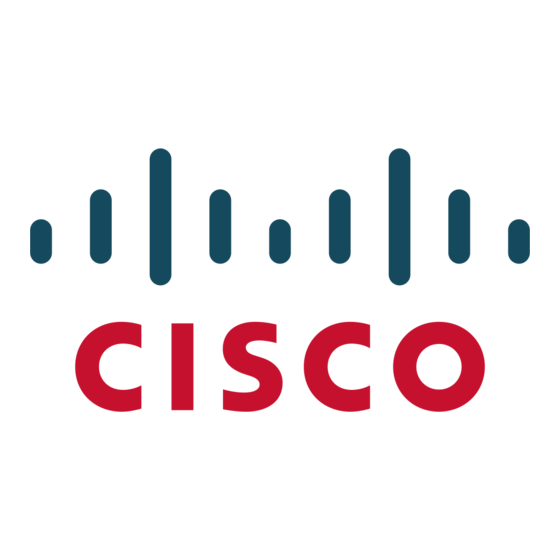Cisco 3550-24 - Catalyst SMI Switch Lembar data - Halaman 8
Jelajahi secara online atau unduh pdf Lembar data untuk Beralih Cisco 3550-24 - Catalyst SMI Switch. Cisco 3550-24 - Catalyst SMI Switch 21 halaman. Cisco catalyst 3550-48: supplementary guide
Juga untuk Cisco 3550-24 - Catalyst SMI Switch: Buletin Produk (3 halaman), Buletin Produk (5 halaman), Pertanyaan dan Jawaban (9 halaman)

Feature
Advanced QoS
Granular rate-limiting
High-performance IP routing
Except static routing, RIPv1, and
RIPv2, all other IP routing features
require the Enhanced Multilayer
Software Image (EMI)
All contents are Copyright © 1992–2002 Cisco Systems, Inc. All rights reserved. Important Notices and Privacy Statement.
Benefit
• 802.1p CoS and DSCP field classification via marking and reclassification on
a per-packet basis using source/destination IP address, source/destination
MAC address, or Layer 4 TCP/UDP port number.
• Cisco control-plane and data-plane QoS ACLs on all ports to ensure proper
marking on a per-packet basis.
• Four egress queues per port supported in hardware to enable differentiated
management of up to four types of traffic.
• Weighted Round Robin (WRR) scheduling to ensure differential prioritization
of packet flows by intelligently servicing the egress queues.
• Weighted Random Early Detection (WRED) on all Gigabit Ethernet ports for
avoidance of congestion at the egress queues before a disruption occurs.
• Strict priority queuing to guarantee that the highest-priority packets will
always get serviced ahead of all other traffic.
• No performance penalty for highly granular QoS functionality.
• Cisco Committed Information Rate (CIR) functionality allows bandwidth to
be guaranteed in increments as low as 8 Kbps.
• Rate-limiting based on source/destination IP address, source/destination
MAC address, or Layer 4 TCP/UDP information—or any combination of
these fields—using QoS ACLs (IP ACLs or MAC ACLs), class maps, policy
maps and per VLAN per port.
• Ability to easily manage data-flows asynchronously both upstream and
downstream from the end-station or on the uplink via ingress and
egress policing.
• Eight aggregate or individual ingress policers and eight aggregate egress
policers on each 10/100 port.
• 128 aggregate or individual ingress policers and eight aggregate egress
policers on each Gigabit Ethernet port.
• Cisco Express Forwarding-based routing architecture performed in
hardware to deliver extremely high-performance IP routing.
• Support for all commonly deployed and industry standard IP unicast routing
protocols (RIPv1, RIPv2, OSPF , IGRP , EIGRP) for load balancing and
constructing scalable LANs.
• Static IP routing for manually building a routing table of network
path information.
• Exterior BGP (eBGP) support to exchange route information between
routers from different autonomous systems. Interior BGP (iBGP) is
supported to exchange routes between the routers within the same
autonomous systems.
• Inter-VLAN IP routing for full Layer 3 routing between two or more VLANs.
• Equal-cost routing for load balancing and redundancy.
• Fallback bridging for forwarding of non-IP traffic between two or
more VLANs.
• Cisco HSRP to create redundant fail-safe routing topologies.
Cisco Systems, Inc.
Page 8 of 20
